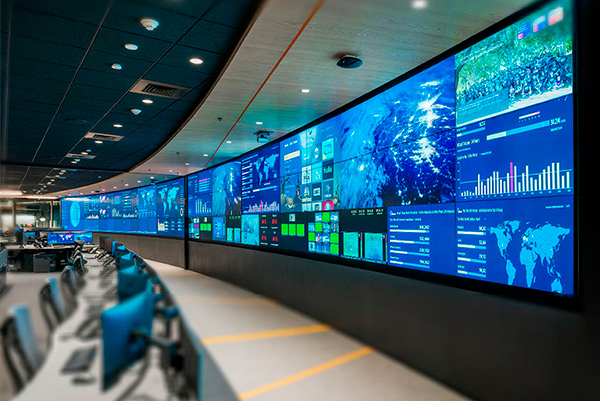Examining the Wide-ranging Connectivity Solutions Offered for Light Emitting Diode Display Modules
LED display panels have gained popularity for their capacity to deliver crisp visuals in multiple settings, from corporate environments to event venues. One of the primary aspects of these systems is their connectivity capabilities, which allow users to connect them to different devices and systems. Comprehending the diverse connectivity options available for LED wall panels is vital for maximizing their use and effectiveness. This discussion details these features, showcasing how they can adapt to specific needs and preferences.

One frequent connection approach for Light Emitting Diode wall panels is HDMI. High-Definition Multimedia Interface is widely known for transmitting high-quality video and audio streams between components. This connection type is particularly useful in commercial environments, such as conference rooms or classrooms, where visual content or video content are often shared. By using HDMI cables, operators can seamlessly link laptops, projectors, and streaming devices to LED wall panels, ensuring a clear and dynamic presentation of information.
Another popular connectivity method is Display Port, which is similar to HDMI but offers enhanced benefits. DisplayPort can support higher refresh rates and resolutions, making it an ideal choice for gaming or design-heavy applications. For those deploying LED wall panels in environments where output quality is critical, such as competitive gaming venues or design studios, Display Port can provide the required visual quality. Additionally, many modern computers and graphics cards include DisplayPort connections, making it a practical solution for technology-oriented users.
In addition to High-Definition Multimedia Interface and Display Port, cordless connectivity options are becoming increasingly prevalent in LED wall panel solutions. Wireless interfaces allow operators to transmit content without the need for physical cables, enabling a cleaner and more adaptable setup. Platforms such as Wi-Fi and short-range communication allow users to link smartphones, tablets, and laptops directly to LED wall panels without cumbersome wires. This convenience is particularly advantageous in fast-paced settings like trade shows or events, where rapid adjustments to displays are often required.
For extensive deployments or more complex setups, LAN integration through wired networking is another reliable solution. Wired connections provide a stable and additional reading reliable way to connect multiple LED wall panels within a network. This approach is ideal for electronic display use cases found in retail centers or transport hubs, where multiple panels may need to display synchronized content across a wide area. By using Ethernet cables and routing hardware, operators can guarantee that all connected panels receive consistent updates and information efficiently.
Lastly, it's crucial to evaluate the future of connectivity with technologies such as Universal Serial Bus-C and Thunderbolt 3. These newer connection types offer increased data transfer speeds and versatility by allowing one connector to handle both energy transfer and data transmission. As more systems incorporate these standards, LED wall panels equipped with USB-C ports will likely become more common. This evolution in connectivity not only enhances the functionality of LED wall panels but also coincides with the emerging trend of minimalism in technology setups by reducing the number of cables needed.
In conclusion, exploring the diverse connectivity options available for Light Emitting Diode wall panels reveals many possibilities for operators across multiple industries. From conventional methods like HDMI and DisplayPort to modern wireless solutions and LAN setups, each pathway serves unique purposes suited to distinct needs. Furthermore, emerging technologies like USB-C promise further advancements in how users interact with LED wall panels. ambient LED lighting design By understanding these integration choices, individuals can make strategic decisions that enhance their overall experience with these versatile display tools.